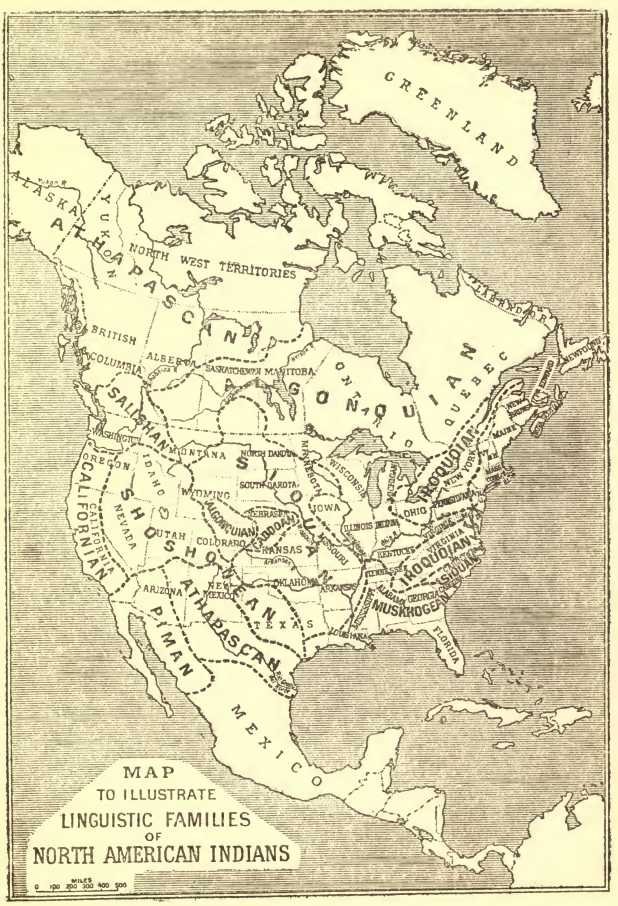The Myths Of The North American Indians
by Lewis Spence | 1914 | 29,049 words
Rich anthology of the myths and legends of the Algonquins, Iroquois, Pawnees, and Sioux, prefaced by an extensive historical and ethnological commentary. Simply written tales of warrior rivalries, steadfast love, and victory over powerful forces. 36 illustrations....
Conclusion
 Image right: Map to illustrate Linguistic Families of North American Indians.
Image right: Map to illustrate Linguistic Families of North American Indians.
In concluding this survey of representative myths of the Red Race of North America, the reader will probably be chiefly impressed with the circumstance that although many of these tales exhibit a striking resemblance to the myths of European and Asiatic peoples they have yet an atmosphere of their own which strongly differentiates them from the folk-tales of all other races. It is a truism in mythology that although the tales and mythological systems of peoples dwelling widely apart may show much likeness to one another, such a resemblance cannot be advanced as a proof that the divergent races at some distant period possessed a common mythology. Certain tribes in Borneo live in huts built on piles driven into lake-beds and use blow-pipes; so do some Indians of Guiana and contiguous countries ; yet no scientist of experience would be so rash as to advance the theory that these races possessed a common origin.
It is the same with mythological processes, which may have been evolved separately at great distances, but yet exhibit a marked likeness. These resemblances arise from the circumstance that the mind of man, whether he be situated in China or Peru, works on surprisingly similar lines. But, as has been indicated, the best proof that the myths of North America have not been sophisticated by those of Europe and Asia is the circumstance that the aboriginal atmosphere they contain is so marked that even the most superficial observer could not fail to observe its presence. In the tales contained in this volume the facts of Indian life, peculiar and unique, enter into every description and are inalienably interwoven with the matter of the story.
In closing, the author desires to make a strong appeal for a reasoned and charitable consideration of the Indian character on the part of his readers. This noble, manly, and dignified race has in the past been grossly maligned, chiefly by persons themselves ignorant and inspired by hereditary dislike. The Red Man is neither a monster of inhumanity nor a marvel of cunning, but a being with like feelings and aspirations to our own. Because his customs and habits of thought differ from ours he has been charged with all manner of crimes and offences with which he has, in general, nothing to do.
We do not deny that he was, till very recent times, a savage, with the habits and outlook of a savage. But that he ever was a demon in human shape must be strenuously denied. In the march of progress Indian men and women are to-day taking places of honour and emolument side by side with their white fellow-citizens, and many gifted and cultured persons of Indian blood have done good work for the race. Let us hope that the ancient virtues of courage and endurance which have stood the Indian people in such good stead of old will assist their descendants in the even more strenuous tasks of civilization to which they are now called.
